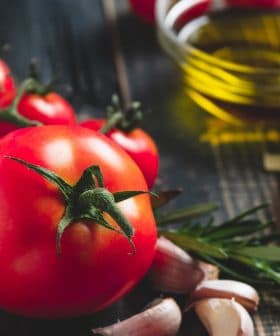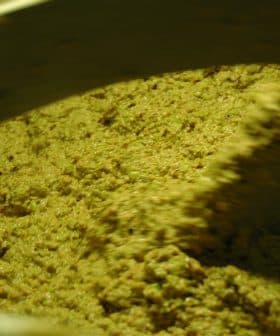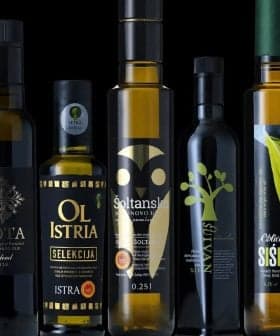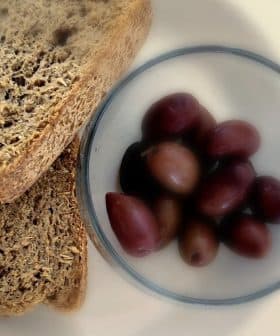Pairing Wine and Extra Virgin Olive Oil for a Perfect Meal
Whether its sauces, meat, fish or vegetables, this Michelin-star chef recommends how to pair olive oil and wine.
Pairing olive oil and wine is a delicate art that can elevate the culinary experience, with successful pairings aiming to enrich the complexity of the meal without overpowering any component. Seasonality significantly influences pairing choices, with lighter, fruitier olive oils and wines favored in spring and summer, while richer, fuller-bodied selections are preferred in autumn and winter.
Pairing olive oil and wine is a delicate art that can elevate the culinary experience.
Those two protagonists, deeply rooted in Mediterranean cuisine, enhance each other’s qualities, creating an extraordinary synergy of flavors and aromas.
Pairing means enhancing the bouquet of flavors.
A successful pairing aims to enrich the complexity of the meal, emphasizing flavors without overpowering any component. Balance is considered essential when selecting olive oil and wine.
Olive oils vary widely, from delicate buttery to robust and peppery, much like wines, which range from crisp and acidic whites to deep, tannic reds.
“At the beginning of a meal, a good bread with an elegant olive oil introduces the palate. The olive oil shouldn’t overwhelm your palate with bitterness,” Alex Lomazzi, sous chef at Michelin-starred Il Pulejo in Rome, Italy, told Olive Oil Times.
See Also:The Flavors of Extra Virgin Olive OilFor example, Lomazzi cited pairing the fruit-forward Tonda Iblea olive oil with sparkling wines like Champagne or Franciacorta.
“The gentle fruitiness of the olive oil beautifully balances the crisp acidity and effervescence of sparkling wines, setting an inviting tone for the rest of the meal,” Lomazzi noted.
Such a match avoids clashing sensations, especially bitterness, that could disturb the perception of a sparkling wine.
“You don’t want olive oil disturbing the first sip of a Franciacorta. That’s why the choice must be soft and round,” Lomazzi explained.

Alex Lomazzi (Photo: Il Pulejo)
His deep awareness of pairing came from years of practice and his background. “I started cooking in Rome, at Il Convivio, a historic Michelin-starred restaurant that taught me the elegance of flavor,” Lomazzi recalled.
After three years in the capital, he moved to France. “That’s where my focus on sauces became central. French cuisine gave me a technical foundation. Even if butter is king there, I’ve always brought olive oil with me,” he added.
Sauce is the essence of the perfect meal.
Sauces are often the secret behind remarkable dishes, tying ingredients together and elevating their flavors.
In fine dining, sauce preparation is a subtle but powerful way to showcase olive oil and wine pairings.
“In France, I started blending butter with extra virgin olive oil in sauces for shellfish,” Lomazzi said. “This approach enhances depth and complexity, providing new layers of flavor.”
For example, Chardonnay can play a crucial role in fish-based sauces.
See Also:Use Olive Oil in Soups and Stews“Chardonnay provides structure and complexity, and when combined with extra virgin olive oil, which captures and amplifies seafood’s essence, you achieve a velvety, rich consistency that makes a sauce exceptional,” Lomazzi remarked.
This thoughtful integration ensures the wine complements and enhances the olive oil’s specific characteristics, delivering harmonious and memorable flavors.
Thus, the sauce becomes not just an accompaniment but the heart of the dish, underscoring the importance of ingredient synergy.
Lomazzi applies the same approach to seasonal vegetables.
“Now that it’s spring, I make sauces using tender turnip greens, emulsifying them with light olive oils. The result is a green, fresh sauce with the scent of raw tomato and young fruit,” he said.
This kind of preparation enhances roasted or grilled vegetables and works wonderfully with whites that have been briefly aged in wood.
A different pairing for each season
Seasonality significantly influences pairing choices, allowing diners to enjoy ingredients at their peak freshness and flavor.
Olive oil and wine selections can shift throughout the year to reflect seasonal produce and culinary styles.
Spring and summer, for instance, favor lighter, fruitier olive oils paired with crisp, refreshing wines, enhancing the freshness of seasonal dishes.
“In spring, I prepare vegetable emulsions using milder, fruity olive oils like Coratina,” Lomazzi explained. “Imagine grilled spring vegetables paired with an elegant, lightly oaked Chardonnay, each bite fresh and vibrant.”
See Also:Extra Virgin Olive Oil Is the Soul of These Classic Italian Winter DishesThis careful pairing highlights the natural sweetness of vegetables, creating a refreshing dining experience ideal for warmer weather.
Autumn and winter, however, invite richer, fuller-bodied selections. Robust, peppery olive oils complement heartier ingredients such as roasted root vegetables, hearty soups, and rich, meat-based dishes.
These dishes pair naturally with robust red wines like Cabernet Sauvignon or Syrah, whose tannins and complex profiles complement the intensity of robust olive oils, creating warming and satisfying culinary experiences suited to colder months.
“Lately in Rome, restaurants have started serving butter with bread, like in France, hay butter, whipped butter… It’s a trend. But when temperatures go above 20 °C, that’s the perfect time to return to our roots,” Lomazzi said.
“It is then time to bring back good olive oil to the table. It’s part of our Mediterranean culture, and it’s lighter, fresher,” he added.
The surprising pairing with fish dishes
Fish dishes provide exciting opportunities for creative pairings, particularly because of their delicate flavors, which need careful consideration to avoid overpowering.
Olive oil and wine pairings in seafood dishes must be subtle yet complementary. Lomazzi favors using Leccino olive oil for raw seafood dishes, such as shrimp or delicate raw fish servings.
“Leccino has balanced flavors with subtle almond notes, adding just the right touch of complexity,” he said.
Paired with a floral, citrus-driven white wine, this combination perfectly accentuates raw seafood’s freshness and nuanced flavors.
See Also:Cooking With Extra Virgin Olive Oil“It gives a slightly spicy and nutty note that works so well with raw red shrimp,” he said.
In this case, Lomazzi relies on wines that match that tone. “The wine I think of is floral, slightly tropical, with white flowers and a hint of pineapple. It has to match the sweetness of the raw shrimp and the almond note of the Leccino,” he said.
Beyond raw dishes, cooked seafood also offers intriguing possibilities. Lomazzi described how olive oil intensifies flavors in cooked fish dishes.
“Using a slightly more intense extra virgin olive oil for cooked seafood dishes helps elevate and integrate flavors, particularly when paired with fuller-bodied white wines such as Chardonnay or Viognier,” he explained.
Meat and its challenging pairing
Pairing olive oil with meat dishes can be challenging due to the meat’s robust flavors and textures.
Cooking directly with olive oil can risk overpowering or masking the meat’s characteristics. Lomazzi acknowledged this challenge.
”Cooking meat directly with olive oil can be tricky. Instead, I use extra virgin olive oil as a finishing touch. For instance, I can pair grilled meats with smoked olive oil, a specialty from Puglia, which imparts a gentle, smoky flavor,” he said.
See Also:Pairing Extra Virgin Olive Oils with Fish and Meat DishesThis finishing touch requires wines capable of withstanding the smoky, rich flavors without overwhelming the palate. Wines such as Montiano, with its soft tannins and velvety texture, complement smoked olive oil beautifully.
“Montiano’s warmth and rounded profile harmonize exceptionally well with smoky notes,” Lomazzi elaborated, making it a versatile choice for grilled meats.
“It’s a wine that I love with smoked oil on grilled meat, full, enveloping, with a nice balance. It supports the dish without competing with it,” he said.
That attention to detail is part of a broader philosophy.
”It’s rare to find restaurants that use several oils for different uses. Most chefs stick with one or two. But if you really research flavors, the right oil can unlock a dish. Just like wine,” he said.
Exploring pairings beyond tradition
Innovative chefs and sommeliers are increasingly pushing the boundaries of traditional pairings, exploring unexpected combinations that might surprise and even delight.
Aromatic olive oils infused with herbs or citrus can offer distinctive pairings, particularly wines that echo or contrast these flavors.
Lomazzi’s culinary curiosity was sparked during his time in France. ”I worked in a restaurant called Fussa. One day, I met a cousin of David Muñoz. He sold olive oil, which was produced in Tunisia and Sicily. That moment sparked my research.”
“We don’t give enough importance to olive oil. It’s cultural. Most customers in Italy never ask which extra virgin olive oil is used. But some do, and they’re the ones who appreciate what we’re doing,” Lomazzi said.
For him, olive oil deserves the same attention as wine. It varies by region, cultivar, process and season. Like wine, olive oil changes a dish.
“When you work with sauces, especially with fish, you choose the olive oil, and you choose the wine. And they become part of the same story. They speak the same language,” Lomazzi concluded.
Share this article









